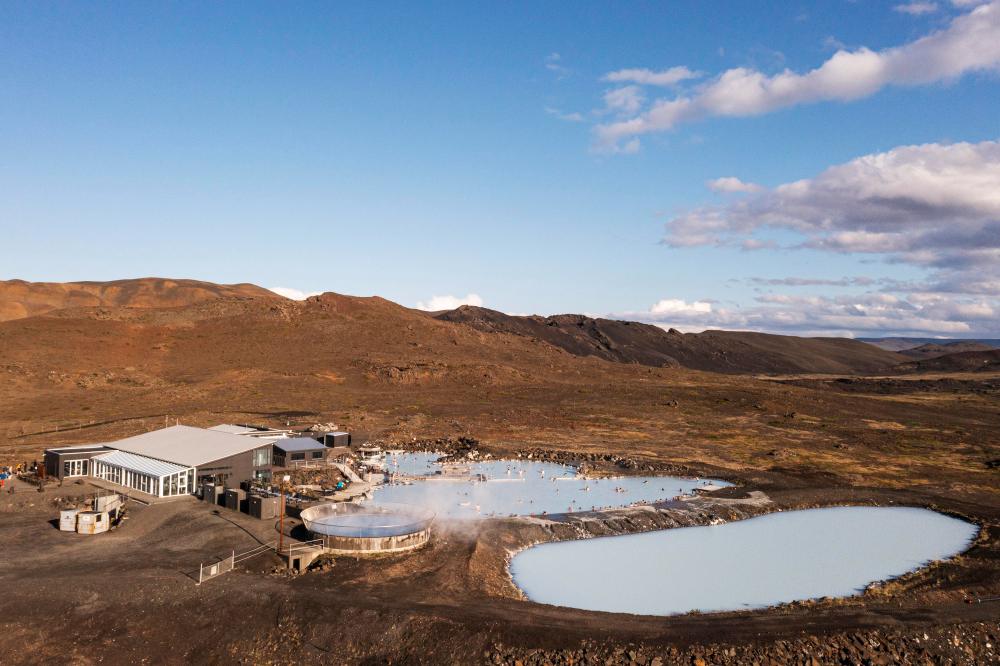Bitcoin mining uses an incredible amount of electricity – between 155 TWh to 172 TWh annually. This is equivalent to what the whole of Poland consumes. Each bitcoin transaction leaves a massive carbon footprint of 720.73 kg CO₂, which equals 120,122 hours of watching Youtube.
The environmental toll keeps mounting as mining operations pump out 77 million to 96 million tons of CO2 every year. Much of the damage goes beyond emissions. Mining operations need about 800 billion liters of water annually – enough to fill 660,000 Olympic swimming pools.
New eco-friendly solutions look promising. Modern heat recycling systems now save up to 96% of mining’s waste heat for practical uses. Renewable energy sources could power over 50% of bitcoin’s operations.
We look at how bitcoin mining affects our environment, uses up resources, and what eco-friendly options exist for the bitcoin mining industry.
Global Environmental Impact of Bitcoin’s Mining Carbon Footprint
Bitcoin mining’s carbon footprint has grown to alarming levels and now ranks as one of the biggest contributors to greenhouse gas emissions worldwide. What it all means becomes clear when we look at different aspects of bitcoin’s effect on the environment.
85.89 Mt CO2eq Emissions (2020-2021)
Bitcoin mining released over 85.89 million metric tons of carbon dioxide equivalent (Mt CO2eq) during 2020-2021. This matches the emissions from burning 84 billion pounds of coal or running 190 natural gas-fired power plants. The scale becomes clearer when we look at what’s needed to offset it – about 3.9 billion trees would need to be planted.
This would take up space equal to the Netherlands, Switzerland, or Denmark, or about 7% of the Amazon rainforest. China’s coal-heavy mining operations produced more than 41 Mt CO2eq during this time.
The offset would need 2 billion trees, covering an area that matches Portugal and Ireland combined. Scientists predict bitcoin mining could make up 0.7% of global carbon dioxide emissions by 2027.
Country-Equivalent Comparisons: Poland-Level Electricity Consumption
Bitcoin uses as much energy as a mid-sized country. The global Bitcoin network used 173.42 terawatt-hours (TWh) of electricity in 2020-2021, making it the world’s 27th largest electricity consumer.
Pakistan’s 230 million people use less electricity than bitcoin. Last year, bitcoin mining used 154.9 billion kilowatt-hours (kWh) globally, which is more than 167 countries combined.

Water and Land Resource Consumption
Bitcoin mining takes a heavy toll on water and land resources. These environmental costs often go unnoticed despite their worldwide effects.
1.65 km³ Global Water Footprint (2020-2021)
Bitcoin mining’s global water footprint reached about 1.65 cubic kilometers during 2020-2021. The water used would meet the domestic needs of more than 300 million people in rural Sub-Saharan Africa. Water consumption shot up by 166% between 2020 and 2021, jumping from 591.2 to 1,573.7 gigaliters. Each bitcoin transaction in 2021 used up 16,279 liters of water.
Land Usage: 1,870 km² Mining Network Footprint
Global bitcoin mining operations cover more than 1,870 square kilometers of land – about 1.4 times bigger than Los Angeles. China uses 913 square kilometers of this space, while the United States takes up 303 square kilometers. The U.S. footprint keeps growing as China shrinks due to regulatory crackdowns.
Hydropower’s Hidden Environmental Costs
Hydropower provides about 16% of bitcoin’s global electricity needs, making it the main renewable energy source for mining operations. People call it “clean” energy, but hydropower comes with serious environmental effects – hydropower needs more land than other renewable energy sources, except for bioenergy.
Regional Variations in Resource Impact
Different regions feel bitcoin mining’s environmental burden differently. Kazakhstan faces “water bankruptcy” yet ranks among the top contributors to bitcoin’s global water footprint. Iran doesn’t deal very well with water shortages but remains a major mining hub.
Canada depends on hydroelectricity for about 60% of its power and ranks third worldwide in mining’s effect on water resources. The UK, Sweden, and Thailand don’t use much electricity for mining, but they rank high in land use because they rely on space-hungry energy sources like bioenergy.
Materials and Methods: Environmental Assessment Frameworks
Bitcoin’s environmental footprint needs strong methods to analyze the complex factors in global mining operations. Research teams have created specialized tools that give a clearer picture of bitcoin’s effect on the environment.
Cambridge Bitcoin Electricity Consumption Index Methodology
The Cambridge Bitcoin Electricity Consumption Index (CBECI) became the main tool to calculate Bitcoin’s power usage in 2019. This techno-economic model gives three estimates: a lowest possible value, a highest possible value, and a best-guess based on how profitable mining is.
The original model assumed all hardware gave equal hashrate, but this didn’t work well when mining became highly profitable. The team improved their method by adding weight to newer hardware and factoring in the time between equipment release and actual use.
The framework grew in 2020 with a Mining Map tool that shows where hashrate spreads globally, which helps determine regional power sources and their emissions. A 2022 update added greenhouse gas emission calculations to paint a better picture of bitcoin’s climate effects.
Life Cycle Assessment of Mining Hardware
Life Cycle Assessment (LCA) shows environmental effects through a product’s entire life – from raw materials to manufacturing, use, and disposal. This method reveals problem areas in Bitcoin mining hardware across several environmental categories.
A detailed study of the Antminer S9, bitcoin’s most popular mining device at one time, found ASICs to be the biggest environmental concern. Circuit boards add heavily to land toxicity, while copper parts like inductors and cables raise various toxicity levels. Most researchers base their calculations on computing power over the hardware’s life.
Limitations in Current Environmental Impact Measurements
The current assessment tools face big challenges. Converting energy use to carbon emissions remains tough because miners’ locations and power sources aren’t always known. CBECI and Digiconomist numbers differ quite a bit – CBECI shows 151 TWh yearly use while Digiconomist reports 98 TWh.
Mining equipment’s end-of-life impact often gets left out, which leaves gaps in environmental data. The lack of clear, local information about mining operations creates uncertainty. Studies also miss the hidden emissions in mining equipment’s global supply chains, which means the total environmental impact is actually higher.

Sustainable Mining Innovations and Practices
Bitcoin mining innovations create sustainable pathways through waste heat utilization, and renewable energy integration. These technologies tackle the environmental concerns mentioned earlier.
Heat Recycling Systems for Mining Operations
Mining operations now reuse waste heat previously released into the atmosphere. MintGreen’s immersion cooling technology recovers 96% of mining electricity as reusable heat. Miners generate heat between 40-50°C (up to 80°C possible), which works well for district heating and food production.
Ground applications include:
- North Vancouver’s district heating system serves 100 buildings with 7,000 apartments.
- Genesis Mining’s greenhouse heating in Sweden uses a 600kW mining container to heat a 300m² greenhouse even in -30°C temperatures.
Renewable-Powered Mining Operations Case Studies
Bitcoin’s power mix now includes over 50% renewable sources. Texas miners act as “shock absorbers” for renewable energy grids. They consume excess power during generation peaks and shut down when demand rises. These miners respond within 5-15 seconds to stabilize grids and monetize stranded energy resources.
CleanSpark shows this flexibility through “underclocking” techniques that mine 1.3 bitcoin using the energy typically needed for one coin. Miners also capture methane gas from landfills and flared gas sites. This process turns harmful greenhouse gases into electricity, effectively converting environmental problems into digital assets.
These technical breakthroughs and better environmental tracking systems suggest a greener future for bitcoin mining. The industry’s development shows how new technology can tackle environmental challenges while keeping operations running smoothly.















